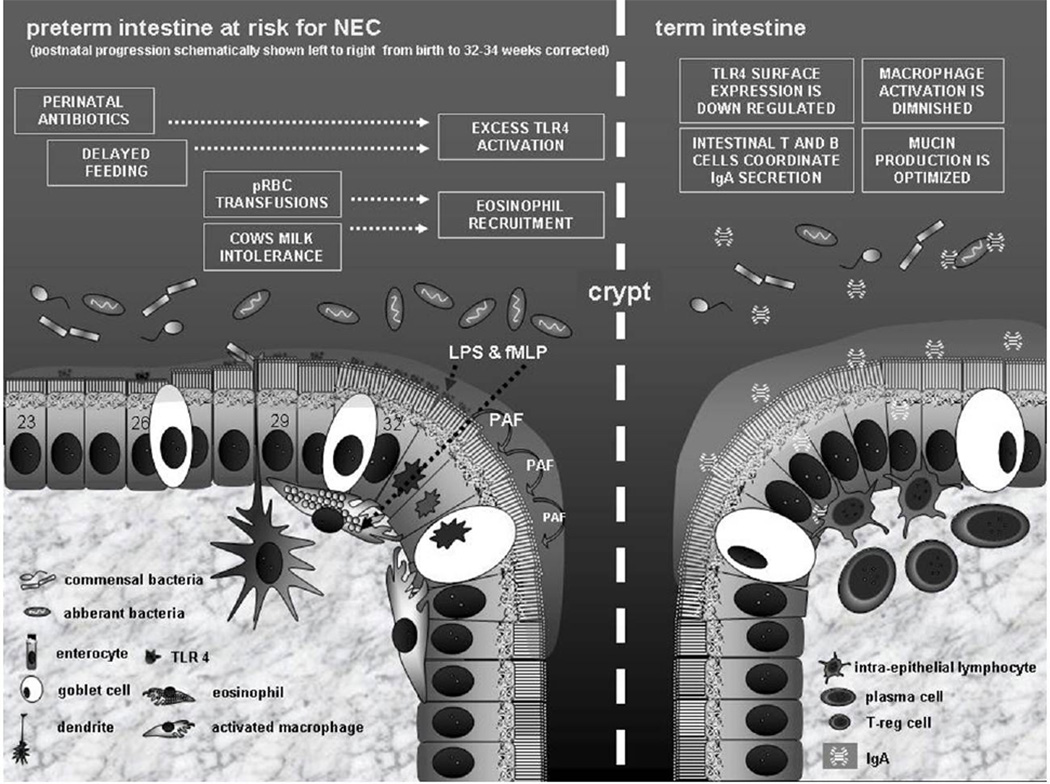Figure 2.
Schematic illustrating proposed differences in NEC risk between preterm and term intestine at the cellular level of the mucosa. At the top of the schematic, risk modifiers and their resultant effectors are shown in boxes. Immediately above the mucosa, bacteria are shown in appropriate abundance and in relation to the boxed narrative above and the corrected gestation time line below (indicated by the numbers in the intestinal epithelial cells). Innate immune system effectors of cellular apoptosis / necrosis can be seen at or after 32 weeks corrected gestation, consistent with Sartwell’s model of incubation. In the term intestine, adaptive immune constituents abrogate NEC risk via active modulation of lumenal flora and down regulation of the innate immune system. Abbreviations / legend: TLR4 (toll like receptor-4 – principle mediator of enterocyte apoptosis in NEC genesis), fMLP (a bacterial metabolite that acts as a chemoattractant for eosinophils), T reg cells (T regulatory cells), PAF (platelet activating factor), LPS (lipopolysacharide – bacterial metabolite that activates TLR4, pRBC (packed red blood cells).

